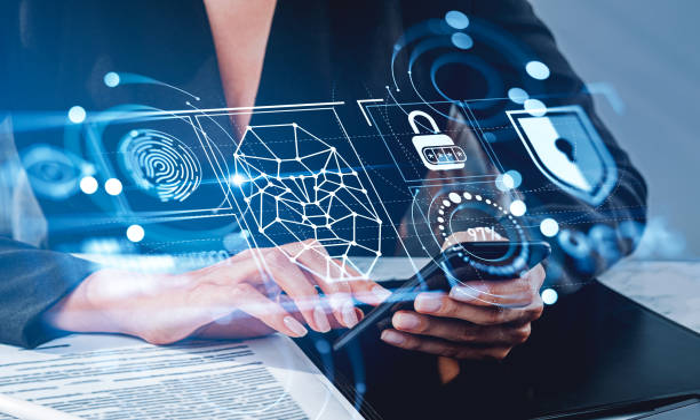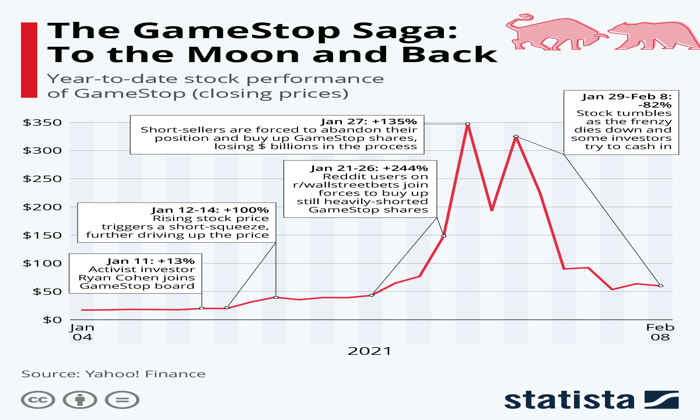In the rapidly evolving world of blockchain, data protection is becoming increasingly paramount. Blockchain data protection ensures that personal information stored within decentralized systems adheres to rigorous standards set forth by regulatory bodies. The recent approval of draft rules by the European Data Protection Board (EDPB) highlights a significant move towards aligning blockchain technology with GDPR compliance and data protection guidelines. These new regulations not only emphasize transparency and accountability but also address critical facets of personal data storage on blockchain and the necessary measures for data processing regulations. As organizations turn to blockchain solutions, understanding the implications of these EDPB blockchain rules will be essential for maintaining individual privacy and security.
As decentralized technologies gain traction, safeguarding personal information remains a vital concern for developers and stakeholders. The intersection of blockchain and data safeguarding underscores the necessity of implementing robust security measures that comply with existing legal frameworks. These emerging technologies must navigate complex data compliance landscapes, integrating personal data storage systems that reflect data protection principles. Organizations must be prepared to adopt innovative approaches that facilitate transparent data processing, adhering to established guidelines while promoting user trust. Emphasizing the importance of regular evaluations through Data Protection Impact Assessments (DPIAs) forms the basis of any responsible blockchain implementation.
Understanding Blockchain Data Protection Guidelines
The European Data Protection Board (EDPB) has introduced comprehensive guidelines aimed at safeguarding personal data in blockchain environments. These guidelines emphasize the necessity of aligning blockchain technology with data protection mandates, particularly those established in the General Data Protection Regulation (GDPR). With the rise of decentralized systems, it becomes crucial to restrict access to personal data and maintain compliance with stringent data protection guidelines. Organizations leveraging blockchain must incorporate these regulations into their operations to ensure individuals’ rights are protected.
Furthermore, the EDPB’s draft rules have highlighted that personal data should not be stored on blockchains unless it adheres to data protection principles. This means that organizations must critically assess their use of blockchain technology in handling personal data. By adhering to the ‘Data Protection by Design’ and ‘by Default’ principles, businesses can better manage risks associated with decentralized data storage and processing, thereby creating a more secure environment for personal information.
The Implications of GDPR Compliance in Blockchain Technology
GDPR compliance is integral to the operation of blockchain applications, especially as it relates to personal data storage. The EDPB’s guidelines serve as a crucial framework for organizations, indicating that compliance is not only about following the rules but also involves embedding data protection measures from the outset. By conducting Data Protection Impact Assessments (DPIAs), businesses can evaluate potential risks associated with blockchain processing and implement necessary safeguards early in the development phase.
Moreover, organizations are urged to implement transparent data processing practices that prioritize the rights of individuals. This includes ensuring their ability to rectify or erase personal data as stipulated by GDPR. The evolving EDPB blockchain rules will therefore impact how companies design and deploy their blockchain solutions, pushing for greater accountability and transparency in managing user data.
Navigating EDPB Rules for Blockchain Operations
The EDPB’s regulations highlight the importance of proactive measures to ensure compliance in blockchain operations. These regulations not only outline data protection requirements but also provide clarity on how organizations can integrate technological solutions with existing legal frameworks. Protecting personal data within decentralized networks requires a thorough understanding of these rules to minimize risks associated with breaches and non-compliance.
Additionally, the EDPB emphasizes that organizations must determine the roles and responsibilities of each party involved in data processing when using blockchain technology. This includes evaluating the storage and transmission of personal data on blockchain networks to ensure that it does not violate GDPR conditions. Proper adherence to these newly established guidelines will bolster organizational trust and consumer confidence in blockchain capabilities.
Data Protection By Design and By Default in Blockchain
One of the central tenets of the EDPB’s guidelines is the principle of ‘Data Protection by Design and by Default.’ This principle requires organizations to build data protection features directly into their blockchain solutions from the outset. It is a preventative approach that ensures data security and privacy measures are integral to the design, rather than being an afterthought.
Implementing these principles in blockchain architectures means that organizations need to consider how data is accessed and shared right from the beginning. By aligning their data processing with GDPR’s requirements, they not only safeguard individual rights but also enhance trust in their blockchain applications from users and regulators alike.
Conducting Data Protection Impact Assessments (DPIAs)
Data Protection Impact Assessments (DPIAs) are essential tools for organizations intending to process personal data in blockchain environments. These assessments help identify and mitigate potential risks associated with blockchain technology that could infringe on individuals’ rights. The EDPB urges companies to conduct DPIAs before implementing blockchain solutions, ensuring that they adopt a preemptive stance on privacy and security.
DPIAs guide organizations through a thorough evaluation of their data processing activities and allow them to compare their practices against GDPR requirements. The results of these assessments inform organizational strategies for compliance, ultimately leading to a more secure implementation of blockchain technology while adhering to data processing regulations.
Transparency and the Right to Rectification in Blockchain Applications
The EDPB has placed significant emphasis on transparency regarding personal data processed and stored within blockchain systems. Individuals must have a clear understanding of how their data is managed, including their rights to rectify or request the erasure of their information. This aligns closely with the rights afforded to individuals under the GDPR, establishing a baseline for organizations that utilize decentralized technologies.
Ensuring transparency requires that organizations implement appropriate mechanisms that allow users to easily access and manage their personal data. By fostering a transparent environment, organizations not only enhance customer trust but also position themselves as responsible stewards of personal data in the rapidly evolving blockchain landscape.
The Future of Personal Data Storage on Blockchain
As we look to the future of personal data storage on blockchain, the EDPB’s guidelines pave the way for a balanced approach that embraces the innovative advantages of blockchain while ensuring robust data protection. By incorporating GDPR principles, organizations can explore the full potential of blockchain technology without sacrificing their commitment to user privacy.
Adopting these guidelines will be critical for organizations aiming to remain competitive in a digital landscape increasingly focused on compliance and security. Innovations in data storage solutions that prioritize personal data protection will likely lead to greater mainstream adoption of blockchain technology across various sectors.
Implementing Data Processing Regulations in Blockchain Environments
Implementing the data processing regulations established by the EDPB requires a comprehensive approach from organizations utilizing blockchain technology. Organizations must fully understand these regulations to successfully adapt their data processing frameworks, ensuring they are in compliance with both general legal standards and specific blockchain-related guidelines.
This includes establishing clear policies regarding data access and retention, as well as ensuring that all processes align with GDPR requirements. By proactively managing these regulatory expectations, organizations can mitigate risks and foster a culture of compliance that resonates with both consumers and regulators.
The Role of Organizational Structures in Data Protection
Effective organizational structures are essential when integrating data protection measures into blockchain technology. The EDPB emphasizes the necessity for adequate technical and organizational safeguards to be in place to protect personal data. This includes clearly defined roles, responsibilities, and processes that ensure compliance with the EDPB’s recommendations.
Organizations should cultivate a culture of data protection awareness among employees, aligning their practices with established guidelines. This proactive approach not only helps in implementing compliance measures but also creates a framework for continuous improvement in data protection strategies.
Frequently Asked Questions
What are the GDPR compliance blockchain guidelines and how do they affect data protection?
The GDPR compliance blockchain guidelines provided by the European Data Protection Board (EDPB) set out rules for how personal data is handled on blockchains. They emphasize the importance of limiting access to stored information and ensuring that blockchain technology aligns with GDPR protections. Organizations must implement Data Protection by Design and by Default and conduct Data Protection Impact Assessments (DPIAs) before processing personal data on blockchain to mitigate high risks to individual rights.
How do EDPB blockchain rules impact personal data storage on blockchain networks?
The EDPB blockchain rules impact personal data storage by recommending measures to avoid storing personal data on blockchains if it contradicts data protection principles. The guidelines stress the need for organizations to implement adequate technical and structural measures to protect individual rights, ensuring that personal data isn’t accessible to an indefinite number of persons by default, thus adhering to GDPR requirements.
What is the importance of Data Protection by Design and by Default in blockchain data protection?
Data Protection by Design and by Default is crucial in blockchain data protection as it ensures that privacy measures are integrated into the development and deployment of blockchain solutions from the outset. This approach aims to safeguard individuals’ rights by minimizing personal data collection and ensuring that privacy settings are defaulted to the highest protection levels, as outlined in GDPR.
What technical measures should be implemented for blockchain data processing regulations?
Organizations should implement a range of technical measures in line with blockchain data processing regulations. This includes encryption of personal data, anonymization techniques, access controls, and transparency mechanisms that allow for data rectification and erasure where applicable. Adhering to EDPB guidelines ensures compliance with GDPR while enhancing the security of personal data within blockchain systems.
How can organizations conduct Data Protection Impact Assessments (DPIAs) for blockchain use?
Organizations can conduct Data Protection Impact Assessments (DPIAs) for blockchain use by identifying and evaluating the potential risks associated with processing personal data on blockchain technology. This involves analyzing how data is collected, stored, processed, and shared, considering the likelihood and severity of risks to individual rights. DPIAs help organizations implement necessary measures to mitigate identified risks and ensure compliance with GDPR.
Why is transparency essential in blockchain data protection practices?
Transparency is essential in blockchain data protection practices because it builds trust and ensures individuals are aware of how their personal data is being used. Under GDPR, individuals have the right to understand what data is being collected, for what purposes, and how they can access or erase their data. The EDPB guidelines emphasize that clear communication regarding data practices is vital in maintaining compliance and protecting individuals’ rights.
What challenges does blockchain face regarding GDPR compliance?
Blockchain faces challenges regarding GDPR compliance mainly due to its immutable nature, which can conflict with the rights of individuals, such as the right to erasure (the ‘right to be forgotten’). The decentralized structure of blockchains makes it difficult to implement certain data protection principles and ensures that personal data is accessible only on a need-to-know basis, as stipulated by GDPR.
| Key Point | Details |
|---|---|
| Approval of Draft Rules | The European Data Protection Board (EDPB) has approved draft rules for how personal data is stored and shared on blockchains, aligning decentralized tech with existing standards. |
| Limiting Access to Data | The new guidelines limit access to stored information and comply with the General Data Protection Regulation (GDPR), with public comments open until June 9. |
| Challenges with GDPR Compliance | Blockchains have unique properties that can complicate GDPR compliance, necessitating a focus on Data Protection by Design and Default. |
| Technical and Organizational Measures | Organizations are advised to implement adequate technical and structural measures early in the design stage of data processing. |
| Data Protection Impact Assessments (DPIAs) | The EDPB recommends organizations conduct DPIAs before processing personal data on blockchains due to potential risks. |
| Transparency in Data Use | The guidelines emphasize transparency, allowing individuals to rectify and erase their personal data within blockchain systems, considering different roles in processing. |
Summary
Blockchain data protection is vital in safeguarding individuals’ rights and ensuring compliance with the GDPR. The recent guidelines by the EDPB are a significant step in integrating effective data protection measures within blockchain technology. By emphasizing the challenges and requirements of data processing, organizations are urged to adopt robust practices that facilitate transparency and uphold the integrity of personal information. This proactive approach is essential for building trust and ensuring that blockchain technology is leveraged responsibly and ethically.
Blockchain data protection is an increasingly vital topic as organizations seek to navigate the complexities of personal data storage on decentralized networks. With the European Data Protection Board’s recent approval of guidelines addressing GDPR compliance blockchain, businesses are now better equipped to align their technologies with established data protection regulations. These data protection guidelines emphasize transparency and responsibility, ensuring that individuals’ privacy rights are safeguarded amidst the growing adoption of blockchain solutions. The EDPB blockchain rules underline the necessity for technical measures and data processing regulations to mitigate risks associated with personal data exposure. As the landscape of technology evolves, understanding the intersection of blockchain and data protection becomes essential for organizations striving to maintain trust and compliance with regulatory demands.
In the realm of decentralized ledger technology, ensuring the secure handling of individual information is paramount. The concept of data safeguarding on ledgers—often referred to as blockchain data security—presents unique challenges that intersect with the established frameworks aimed at protecting personal information. Recent developments from the European Data Protection Board introduce new mandates to harmonize these novel technologies with existing data safeguarding laws. This includes practical measures aimed at meeting the standards set forth in data protection legislation while addressing the complexities inherent in decentralized systems. As we advance, the discourse around the security of data within blockchain infrastructures will continue to evolve, necessitating an acute awareness of regulations and compliance methodologies.















